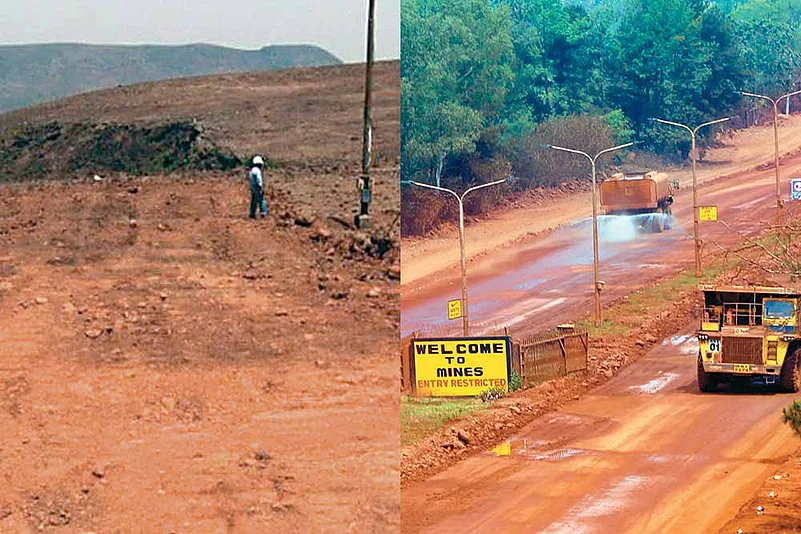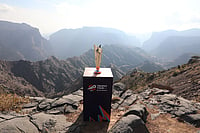When the severe cyclone, Fani, hit the coast of Odisha in May 2019, NALCO too faced its brunt. Its headquarters and townships were substantially damaged. But apart from taking care of its employees, it was at the forefront to provide help and relief to the poor, whose sufferings were higher. Immediately, the company swung into action, and gave away relief materials at the affected locations. It drew up a long-term strategy to rehabilitate the underprivileged sections. In addition, it agreed to plant trees to make up for the lost green cover.
It’s smart. It’s sustainable. It’s safe. It is protective. And, more important, apart from the economic advantages, it’s socially beneficial. Welcome to the mining world of NALCO, where the desire is to maximise production and profitability, sales and exports, with a passionate commitment to minimise the negative impact on the environment, workers, and local communities. It may sound paradoxical, or oxymoronic, but the fact remains that the company has successfully managed to achieve these twin objectives.
A combination of technology, best practices, and active and responsible community engagement yielded the desired results. The key lies in the ability to realise that one can utilise natural resources with care, intelligence, and protection through an integrated, holistic, and comprehensive Sustainable Development policy. These values are incorporated in the Mission and Vision statements, as well as the Core Values of the company so that it becomes systemic, and involves all the internal and external stakeholders.

Take the case of staggered mining, which prevents the concentration of dust, noise, and smoke. This helps to keep the pollution at minimal levels. Similarly, the movement of seven million tonnes at the Panchpatmali captive bauxite mine in Odisha through a belt conveyor leads to minimal use of power, and minimum pollution. Parallel trenches facilitate multiple work sites. And efficient equipment enables the company to monitor the removal of the topsoil and laterite so that there is no overexploitation.
Even the drilling and blasting activities are performed and monitored in an intelligent manner. An advanced form of non-electric firing mechanism, NONEL, is used in explosives. Sequential firing helps in hole-to-hole delay, which keeps a further check on dust and noise levels. When the mined bauxite is moved to the crusher house, the fleet is managed through a GPS-based system, which enables the organisation to monitor production and productivity in real time. Overall, it helps to sustainably optimise the operations.
Dust, as we have seen, is one of the major issues in mining. NALCO takes several other steps to control it. There are both fixed and mobile sprinklers at key locations to suppress them. A green cover of sufficient width along the edges of the plateau, which is the mining area, achieves the same purpose. The greeneries achieve an additional purpose – they control the flow of waste materials like clay and slurry along with the rainwater into the valley. This prevents the pollution of the adjoining area, which houses the local population.
A check on the water flow has other benefits. The retained water percolates into the ground, and recharges the groundwater table. Digging of ponds in the unexplored portion of the mine does the same. There are structures on rooftops that collect the rainwater, and enable it to flow to the ground to further recharge the water table in the area. In the mined-out areas, laterite backfills are used to form terraces, as well as depressions, at strategic locations. These then act as water reservoirs and rain-harvesting structures.
Enhancing the water table as well as the quantity of surface water, in turn, helps to regenerate vegetation and wildlife. They enable the birth of new ecosystems, which are as good, or even better, than the original natural ones. Every monsoon, fresh plantation is carried out so that the land can be reclaimed. Until now, NALCO has reclaimed 315 hectare, where 3.5 million trees are planted. Most of the vegetation species are chosen in a manner to ensure that they are native, tolerant of the specific local conditions, and have the requisite adaptability to endure the climatic extremes in the region. Thus, there is a massive restoration of forests in the mining area.
In addition, the company initiates pro-active efforts to manage the wildlife in the area. It prepares detailed management plans for the Panchpatmali mine, which are approved by the state’s forest department. These are then activated in a carefully monitored manner. The state’s Utkal University had conducted a regional biodiversity study, and made several recommendations. NALCO immediately and enthusiastically decided to implement them.
Since NALCO is a responsible and empathetic citizen, it undertakes the development of peripheral villages to fulfill its CSR commitments. Such projects relate to issues such as agriculture, health, education, culture, sports, and rural infrastructure. For the company, such expenditure is not a part of mandate but its desire to share happiness and progress with the local communities. In early 2019, it married Employee Social responsibility with CSR; it adopted girl children under its scheme, NALCO Ki Ladli.
Live, but let the local communities and the regional natural ecosystems thrive better is the overriding motto of the company.


























